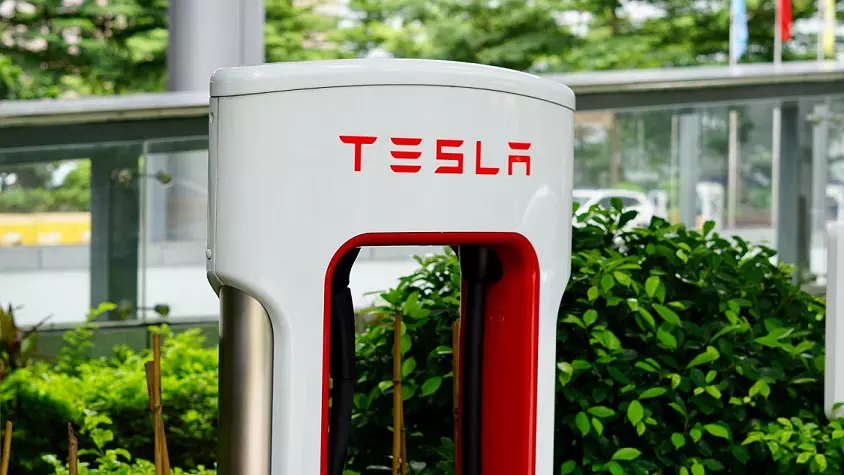The first thing you need to know is that both DC and AC charging are available in your area. You’ll have different options depending on where you live and how far away from a power source your EV is. Most charging stations will be DC, but there are some models that can only charge using AC current.
However, if you were to travel long distance, DC Fast Charger is your best bet to get juiced up throughout your journey.
What is a DC Fast Charger for EV
A DC Fast Charger is a type of electric vehicle (EV) charger that provides a faster charge rate than the standard AC plug-in home charger. The charging rate can reach up to 350 miles per hour, making it possible for your EV battery to be fully charged in just 30 minutes.
How does this work? The speed at which you can charge at varies depending on the type of charger and its capabilities, but generally speaking.
The difference between DC Fast Charging and typical home AC charging is that the former is much faster than the latter. With AC chargers, it can take anywhere from 8-10 hours to fully charge an EV battery pack.
DC Fast chargers are typically much more expensive than the standard home AC charger, but they’re also much more efficient in providing electricity directly from the grid. For example, the Tesla Model S has a range of about 300 miles on a full charge and can go up to 400. If you were to use only an AC plug-in charger at home, it would take eight hours or longer for your car’s battery pack
What is the availability of DC Fast Charger for EV in the US?
You can find DCFC at locations across the United States. Currently, there are over 3,000 DCFCs available in 37 states. These stations are operated by ChargePoint Network Inc., which is an EV charging station provider that uses Tesla Superchargers to provide a fast-charging option for EVs.
You can use these stations with the Tesla app or on their website: https://www.chargepoint.com/.
However, these stations are limited by the fact that Tesla Superchargers can only be used by Tesla vehicles. But other EV cars could soon use the Tesla Supercharger, as DCFCs are being installed in more and more locations across America. For example, Nissan Leaf owners will have access to DCFC stations at Nissan dealerships starting this year.
The Supercharger network is a proprietary fast-charging network for Tesla vehicles. It has over 1,000 stations in the United States and Canada. They are so far, the biggest DC Fast Charging provider in the states. The next would be ChargePoint. The DCFCs are provided by ChargePoint Network Inc., which operates more than 3,000 stations across 37 states. Most people use their vehicles to get around town and travel on long trips, so having access to fast chargers at both home and work can make owning an EV much easier.
Other than Tesla Supercharge network, there are alternative DCFC from other providers. These include ChargePoints network, Electrify America, EVgo Network and Tesla Supercharger. The DCFCs are provided by ChargePoint Network Inc., which operates more than 3,000 stations across 37 states. Most people use their vehicles to get around town and travel on long trips, so having access to fast chargers at both home and work can make owning an EV much easier.
How much would it cost to charge via DCFC?
To determine how much it costs to charge via DCFC, we looked at the cost per minute charging at Tesla Supercharger, Chargepoints, Electrify America and EVgo. After doing some math, we found that the most cost-effective way to charge at DCFC is to charge from 20% to 80%. This means that you will pay more per kilowatt-hour than at other stations, but it’s still a competitive price.
DCFC at Tesla Supercharger: $0.34/minute
DCFC at Chargepoints: $0.30/minute
DCFC at Electrify America: $0.20/minute
DCFC at EVgo: $0.25/minute
For example, say, to charge the Tesla Model 3 from 20% to 80%, would cost you $0.34/min * 9 minutes = $3.06, or a total of $12.24 for a full charge on the same DCFC station.
Now, let’s compare that to a Tesla owner who charges from 0% to 100%. This will cost them $0.34/min * 18 minutes = $6.12, or a total of $24.48 for a full charge on the same DCFC station.
Conclusion
The EV charging station is a promising technology that may solve the problem of EV charging, but it has to be scaled up in order to provide enough power for all cars on the road. The invention of DCFCs could help achieve this goal by providing cheap and effective power storage solutions for EVs.
However, it will take more than just a couple of years before we see these cars on our roads. Electric vehicles are still expensive compared to gasoline-powered vehicles, and the price is likely to remain high for several years. But after a few years, when battery technology has been improved and the cost of production reduced significantly, we may well see EVs become as common as petrol or diesel cars.
